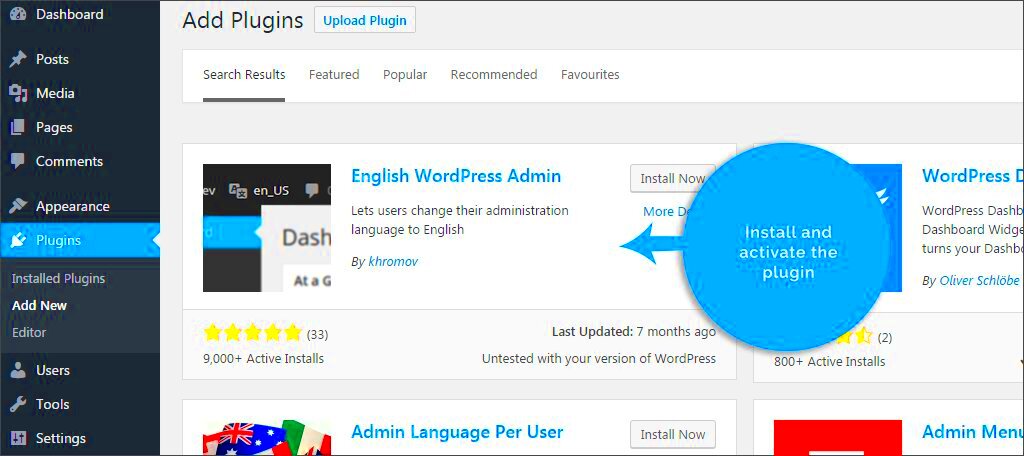Latin American Spanish is one of the most widely spoken languages in the world, with millions of users across various countries in Latin America. If your WordPress website aims to reach this vast audience, it’s essential to provide content in their native language. Installing a Latin American Spanish plugin for your WordPress site is an easy and efficient way to offer a seamless experience to Spanish-speaking visitors. Not only does this improve user engagement, but it also boosts your site’s accessibility and broadens its global reach.
Why Install a Latin American Spanish Plugin?
Installing a Latin American Spanish plugin for WordPress can greatly benefit your site in several ways:
- Wider Reach: By offering content in Latin American Spanish, you make your site accessible to a larger audience. Spanish is spoken by over 400 million people worldwide, and a significant portion of them reside in Latin America.
- Improved User Experience: When users can interact with your site in their native language, it enhances their experience and encourages them to spend more time on your site.
- SEO Benefits: Translating your content into Spanish can improve your site’s search engine rankings in Spanish-speaking regions, leading to higher visibility and better traffic.
- Competitive Advantage: If your competitors aren’t offering content in Latin American Spanish, this could give you an edge in attracting more visitors and customers.
In addition to these benefits, providing multilingual support makes your website more professional and user-friendly, fostering trust with your audience.
How to Choose the Right Latin American Spanish Plugin
Choosing the right Latin American Spanish plugin for your WordPress site is crucial to ensure accurate translations and smooth functionality. Here are some factors to consider when selecting the plugin:
- Language Support: Make sure the plugin supports Latin American Spanish specifically. While there are many Spanish language plugins available, some may focus on Castilian Spanish, which is slightly different from Latin American Spanish in terms of vocabulary and grammar.
- Ease of Use: Look for a plugin that is user-friendly and doesn’t require advanced technical skills to install and configure. Some plugins offer drag-and-drop interfaces and automatic translation options that make the setup process simple.
- Translation Quality: Ensure that the plugin provides high-quality translations. Some plugins offer automatic translations, but they may not always capture the nuances of Latin American Spanish. It’s best to choose a plugin that allows manual editing for more accurate translations.
- Compatibility: The plugin should work seamlessly with your current theme and other plugins. It’s important to check compatibility with popular WordPress themes and plugins to avoid conflicts.
- Support and Updates: Choose a plugin that offers reliable customer support and frequent updates. This ensures that the plugin will continue to function properly as WordPress evolves and new features are added.
By keeping these factors in mind, you’ll be able to select the best Latin American Spanish plugin that meets your site’s needs and provides an excellent user experience.
Step-by-Step Guide to Installing the Plugin
Installing a Latin American Spanish plugin for your WordPress website is a straightforward process. Whether you’re a beginner or an experienced user, following these simple steps will help you get the plugin up and running in no time. Here’s a step-by-step guide to help you install the plugin:
- Step 1: Log into WordPress Admin
Go to your WordPress website’s admin panel by logging in with your credentials. - Step 2: Navigate to Plugins
In the left sidebar, click on “Plugins” and then select “Add New.” This will take you to the plugin installation page. - Step 3: Search for the Plugin
In the search bar, type the name of the Latin American Spanish plugin you want to install. For example, you might search for “Polylang” or “WPML.” - Step 4: Install the Plugin
Once you’ve found the plugin you need, click on the “Install Now” button. WordPress will automatically download and install the plugin for you. - Step 5: Activate the Plugin
After installation, click the “Activate” button to enable the plugin on your website. - Step 6: Configure the Plugin
Once activated, go to the plugin settings and follow the on-screen instructions to configure the plugin and select Latin American Spanish as the default language.
Now your site is ready to support Latin American Spanish. The installation process is quick, and once completed, your WordPress site will be more accessible to a global audience.
Configuring Your Plugin for Optimal Performance
After installing your Latin American Spanish plugin, the next crucial step is configuring it for optimal performance. Proper configuration ensures that your website provides a seamless multilingual experience. Here’s how you can configure your plugin:
- Select Default Language: In the plugin’s settings, set Latin American Spanish as the default language. This will ensure that all content is displayed in Spanish by default for users visiting your site from Spanish-speaking regions.
- Enable Automatic Language Detection: Some plugins allow automatic language detection based on the user’s browser or location. Enable this feature to automatically show Latin American Spanish to visitors from Spanish-speaking countries.
- Translate Site Elements: Ensure that your theme elements such as buttons, menus, and widgets are also translated into Latin American Spanish. Most plugins allow you to translate these elements directly within their settings.
- Set Up Language Switcher: If you plan to offer multiple languages, add a language switcher to your site. This lets users toggle between languages easily. Place the switcher in a prominent spot like the header or footer.
- Customize Translations: Review and edit translations where necessary. Sometimes, automatic translations might not capture the regional nuances of Latin American Spanish. Edit translations manually to ensure accuracy.
- Optimize for Performance: To avoid slow load times, keep an eye on the number of plugins you have installed. Too many plugins can slow down your website. Additionally, choose a caching plugin that’s compatible with your multilingual setup.
By configuring the plugin properly, you will enhance your website’s user experience, ensuring that your visitors enjoy seamless navigation in their native language.
Translating Content into Latin American Spanish
Once your Latin American Spanish plugin is installed and configured, the next step is translating your content. Translating your website’s content accurately is key to providing a professional and personalized experience for your Spanish-speaking visitors. Here’s how you can go about translating content into Latin American Spanish:
- Use Automatic Translation (With Caution): Many plugins, like WPML or Polylang, offer automatic translation features. While this can be a great starting point, it’s important to manually review and adjust the translations to ensure they are culturally and contextually appropriate.
- Manually Translate Content: For more accuracy, manually translate your posts, pages, and other content. Most plugins offer a user-friendly interface for adding translated content. You can use Google Translate as a base but make sure to adjust the tone and vocabulary to suit the Latin American audience.
- Consider Regional Differences: Latin American Spanish can vary across different countries. Be mindful of regional variations in vocabulary and expressions. For example, the word for “bus” in Mexico is “camión,” but in Argentina, it’s “colectivo.” Tailor your content to reflect these differences for a more authentic experience.
- Translate SEO Elements: Don’t forget to translate SEO elements such as meta descriptions, alt texts for images, and title tags. These elements are crucial for ensuring your site ranks well in search engines in Spanish-speaking regions.
- Check for Consistency: Consistency is important in any translation project. Make sure that your tone, style, and terminology remain consistent across all content. Consider creating a style guide to maintain uniformity in translations.
After translating your content into Latin American Spanish, thoroughly review it to ensure everything is accurate and flows naturally. A well-translated website will build trust with your Spanish-speaking audience, ultimately leading to a better user experience.
Testing the Plugin and Language Settings
Once you’ve installed and configured the Latin American Spanish plugin, it’s time to test everything to make sure it’s working as expected. Proper testing ensures that your site is fully functional for Spanish-speaking visitors and that all translations are displayed correctly. Here’s a simple guide to testing your plugin and language settings:
- Check for Language Switcher: If you’ve added a language switcher to your site, test it by switching between languages. Make sure that clicking the switcher seamlessly changes the content to Latin American Spanish without any errors.
- Verify Translations: Go through your pages and posts to check the accuracy of translations. Ensure that all text, including headings, menus, and buttons, is correctly translated into Latin American Spanish.
- Test Mobile Responsiveness: Check how the site appears on mobile devices. The plugin should ensure that the language settings are properly displayed, regardless of the screen size or device used.
- Test Plugin Compatibility: Review how the plugin interacts with other installed plugins. Make sure that it doesn’t cause any conflicts or issues with other features on your website.
- Check SEO Settings: Ensure that the translated content is indexed properly by search engines. Test SEO elements like meta descriptions and URLs to ensure they display the correct language version.
- Feedback from Users: Get feedback from native Spanish speakers who can review your site for any translation errors or issues with the user experience. They might notice things that automated tools miss.
By thoroughly testing your plugin and language settings, you ensure a smooth, professional experience for your Spanish-speaking audience. Regular testing also helps you stay ahead of potential issues and keeps your website running smoothly.
FAQs
Here are some frequently asked questions about installing and using Latin American Spanish plugins on WordPress sites:
- Do I need to install a separate plugin for each language?
No, most multilingual plugins allow you to manage multiple languages within one installation. You can add Latin American Spanish and any other languages as needed. - Will the plugin automatically translate my content?
Many plugins offer automatic translation, but it’s recommended to manually review and adjust the translations for accuracy and cultural relevance. - Can I use the plugin on an existing WordPress site?
Yes, you can install the plugin on any existing WordPress site. Just make sure to back up your site before making any major changes. - How do I handle SEO with multiple languages?
Most multilingual plugins have SEO settings to help you manage translated content. Ensure you translate meta tags and URLs, and check the settings to ensure each language version is properly indexed by search engines. - Is it necessary to have a language switcher?
While not required, a language switcher is a useful feature that allows users to easily toggle between languages. It’s especially helpful if your site targets multiple regions.
If you have any more questions or run into issues, most plugins offer detailed documentation and support forums to help you resolve any concerns.
Conclusion
Installing a Latin American Spanish plugin on your WordPress site is a great way to broaden your audience and improve user experience. By offering content in Latin American Spanish, you cater to millions of potential visitors who speak this language, helping you connect more effectively with a global audience. The process of installation, configuration, translation, and testing may take some time, but it’s an investment in your site’s growth and success.
Once you’ve completed the setup, always remember to review your content regularly, test the functionality of the plugin, and stay updated on new versions. A well-optimized multilingual site can drive more traffic, enhance engagement, and improve your site’s visibility in Spanish-speaking regions.
By following the steps outlined in this guide, you’re well on your way to making your WordPress site more accessible and user-friendly for Spanish-speaking visitors. Start implementing these strategies today and watch your website reach new audiences!



